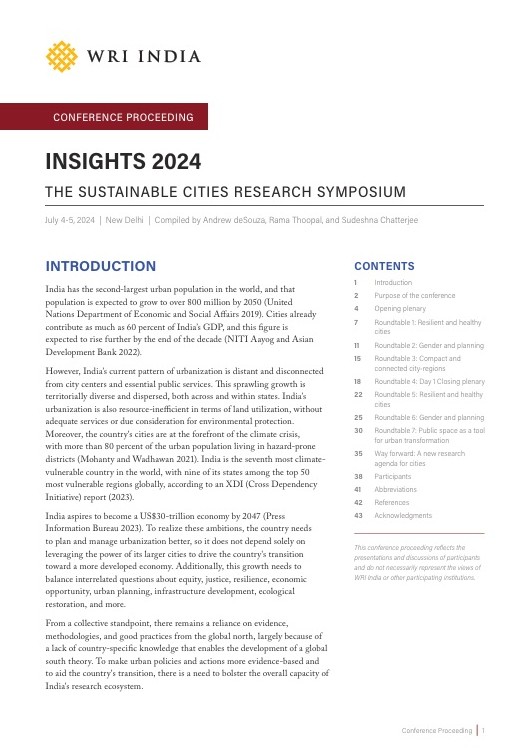Digital Ticketing as a Way Forward for Safer, Cashless Public Transport
by -
This blog was originally published on NIUA.org.
In the present time, with technological advancements gaining popularity numerous services have migrated to online platforms, resulting in reduction of the infrastructural requirements to a large extend. A similar shift in bus ticketing systems is imminent. The COVID-19 pandemic has also brought to light the need for contactless ticketing and presented a vital opportunity to create a seamless ticketing system for public transport in India. Through this blog, we investigate the pressing need for a digital ticketing system in India.
As the fear of infection via public transport increased, bus systems across cities like Delhi, Mumbai, Bengaluru, Ahmedabad, Pune, Chennai and Hyderabad witnessed a decline in ridership. To combat this, the Delhi government, in June 2020 undertook an initiative to conduct trials and implement app-based ticketing. As per the pre-pandemic ticketing data, over 36% tickets are being issued using passes or One Delhi Card in Delhi. The One Delhi card is a common mobility card launched in December 2018 for Delhi’s buses and metro. It allows the authorities to issue tickets using a pre-paid card cashlessly. The first trial of the QR code-based ticketing app (Chartr) was conducted in August, on route 473 connecting Anand Vihar to Badarpur border for a period of three days. The trial made use of lower occupancy rates and encouraged the conductor/marshal to explain the use of the app to passengers. This trial recorded over 1,000 downloads by the second day, and in this about 43% passengers required assistance for purchasing tickets. For people to feel better motivated to use the app, Hindi language was added to the interface and the app was made more user-friendly along the way, based on passenger feedback. Many such lessons from the first trial were implemented in the second round of the trial in over 15 cluster and DTC bus routes. The second trial was conducted for a period of 15 days, later extended to one month. During these trials we witnessed an initial shift of ticketing through the app by 6%, this share continues to grow. During the second trial over 51,000 tickets were issued through the app in just 14 days. Based on primary passenger surveys conducted by WRI India, over 90% of app users are in inclined towards continual use of Chartr app.
Today, Delhi has progressed the trial to a depot level implementation and the app is now being used across 650 buses and has issued over two lakh tickets in a matter of three months. In the process, the city has regained over 45% of its pre-pandemic ridership. Delhi also has the “No Mask-No ride” initiative and timely sanitation of buses to thank for the steady increase in ridership numbers. This innovation can serve as an example for other cities to take notes from and implement in their public transport systems. Digital ticketing services eases the ticketing experience for users while attracting larger passenger numbers, and also generating better trip data. The end-to-end, trip data generated for individual users through such apps can be used for regular optimization of routes and services.
Looking at a few examples of cities across the globe that have adopted digital ticketing, such as London, where contactless card payments were introduced by Transport for London (TfL) in September 2014. This allows passengers to avail transit facilities using contactless cards, NFC-enabled (near field communication) smart phones or other contactless devices. Within the first two years of the launch, TfL witnessed an increase in daily trips by more than 1.8 million using these contactless payment cards, and about 25,000 new contactless cards issued every day. In September 2017, TfL launched TfL Oyster and Contactless App allowing passengers to top-up their oyster cards and see travel history online. After the first trial, as per TfL surveys over two-third users stated contactless payment as preferred mode of payment, and within a month this share rose to 16%. App-based ticketing also allows cities to issue Mobile Tickets or M-Tickets wherein bus tickets are booked using transit apps and QR codes generated through them can be presented at the time of boarding. This has been implemented in number of cities such as Edinburgh, Stockholm, Toronto, etc. These cities have reported that M-Tickets ensure faster service while also indicating an increase in ridership in some cities.
As our cities grow and the travel needs multiply, authorities must actively look at digital alternatives to the paper and cash economy. The pandemic has presented an opportunity to pilot newer digital options and implement these initiates across the public transport network. Even though these initiatives stem from the need for contactless ticketing now, they have many long-term benefits for cities. App-based ticketing systems are an innovation that will outlast the pandemic and help both passengers and the transit agencies in many other ways. Better-quality trip data, lack of revenue leakage, paperless transaction, and initiating a shift towards a more cash-less, digital economy can be some of the top highlights.
Views expressed here are the author’s own.


